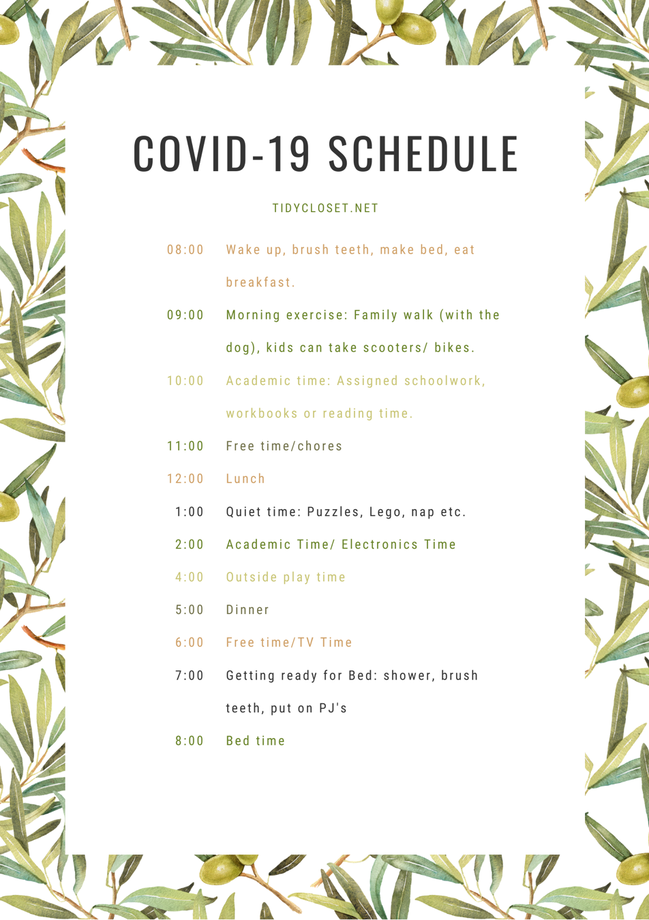|
Today's Guest Author is Janine Morales, a Professional Organizer from San Diego, California. She is a former teacher with a degree in Behavioral Sciences and teaches the benefits of organization in the home and at work. She is KonMari certified and helps her clients make decisions about their belongings and create a home that sparks joy.
1. Create a separate workspace for yourself It is important to have a private/separate workstation if you work from home. Common spaces like the kitchen or living room are great for socializing, but when you have to hold a zoom meeting or phone a client it best be without the background noise and children running around on the screen behind you. If you have an office, use it, if you don’t, no problem, just put a desk in the corner of your bedroom or guestroom and create a work nook where you can shut the door if needed and work uninterrupted for some time. 2. Schedule work and play Time Management: It is important for you and the kids, so everyone knows when to work and when to play. Here is a sample schedule you can follow or edit to your family’s needs. Older kids can help with chores as part of their schedule and make sure to plan some family time with board games, walks, or movie nights. 3. Set up a designated learning space for your child Kids need to move around throughout the day, but it is important to have one or two designated learning spaces, so materials won’t be all over the place. A desk in their room for independent work or the kitchen table for homework help are some examples. Have a basket or container for supplies such as pens and papers, so they can be moved around easily from one learning space to another. Also, take learning outside the “classroom”; Helping prepare food, finding herbs in the wild, or trimming the grass in the yard are all important life skills to learn. 4. Give your child tools when they must wait for your attention Make sure to communicate with your children and let them know your “work hours”. You can put a sign on your door as well to remind them that you are working. Some children might appreciate a list of go-to activities (such as free-reading, art projects, or journaling) to do when they can’t move forward without your help or when they are waiting for your attention. Let them know how much you appreciate their patience. 5. Take breaks Make sure to take care of yourself. Working at home and homeschooling your children can be exhausting. Accept help (from family members or neighbors) if they are willing to watch the kids or swap kids once a week for homeschooling if you are comfortable to do so. That would be great for the kids' social/emotional skills as well as give you a break from childcare/teaching. Intentionally do something for yourself that you enjoy. Go for a hike or walk the dog around the neighborhood. Meet (or zoom) a friend for coffee or read a book that you have been wanting to read. Get a much-needed massage or have a date night. The possibilities are endless, you just have to make time for it. Comments are closed.
|
AuthorMy name is Laura, and I love all things organizing! Categories
All
|



 RSS Feed
RSS Feed
